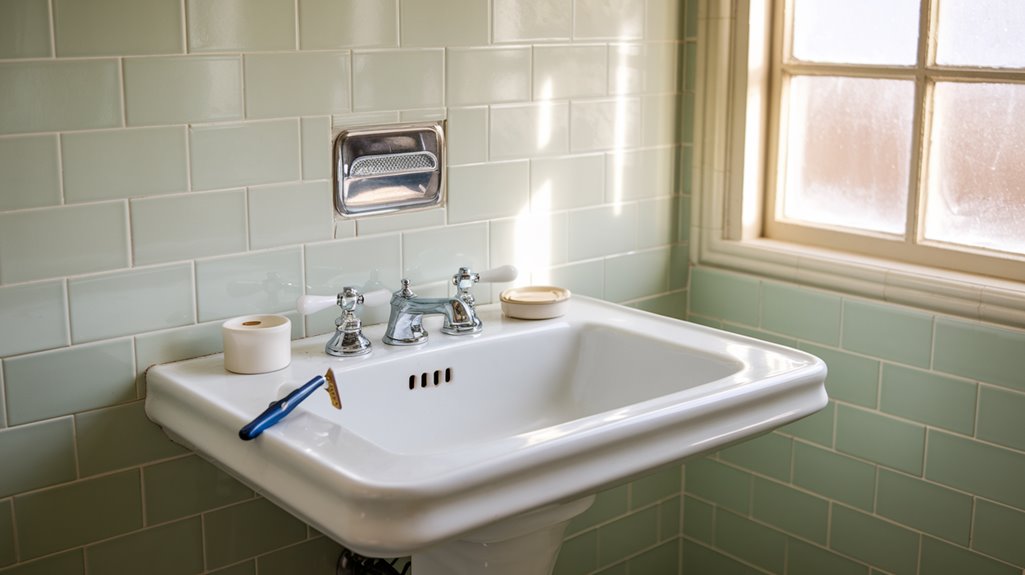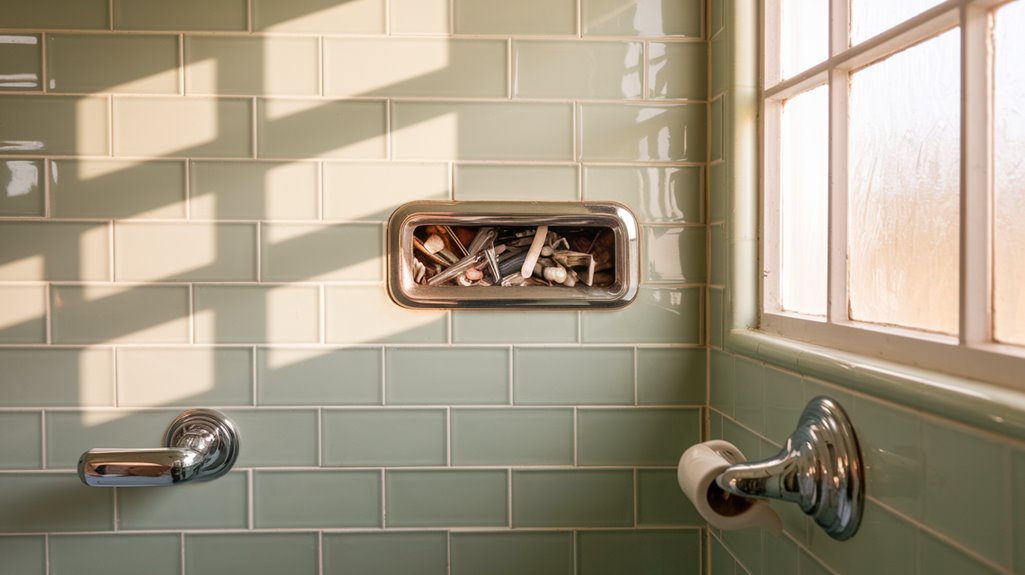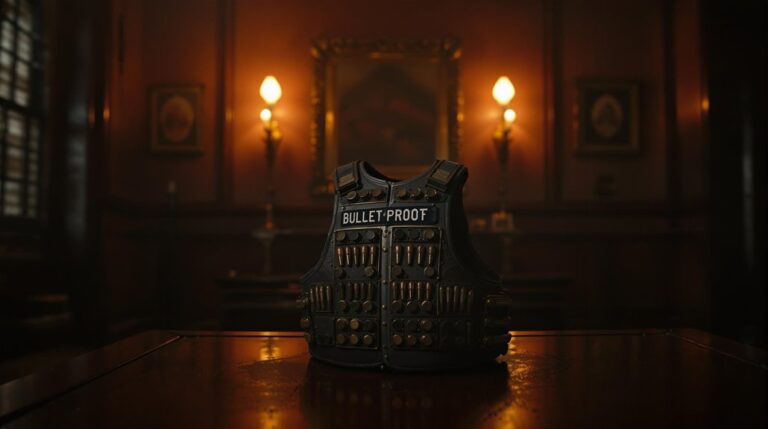Old Bathrooms Had Wall Slots for Disposing Razor Blades
If you've ever renovated an old bathroom, you might've discovered a peculiar slot in the wall or medicine cabinet that seems to lead nowhere. What you're looking at is actually a deliberate design feature from the early to mid-1900s – a razor blade disposal system. While it may seem bizarre by today's standards, these hidden repositories served a practical purpose that made perfect sense to previous generations, though they've left behind some surprising traces that modern homeowners are still uncovering.
The Mystery Behind Your Bathroom Wall
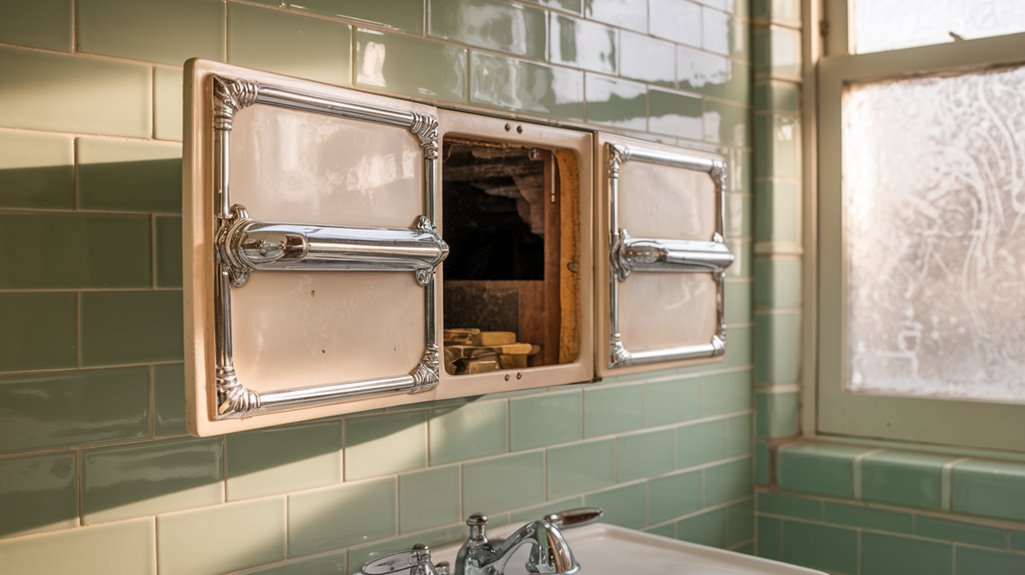
While renovating an old home, you might discover a peculiar feature in your bathroom: a mysterious slot in the medicine cabinet. This isn't a manufacturing defect – it's actually a deliberate design from the early 20th century, created specifically for razor blade disposal.
When you're tackling home renovations in houses built before 1970, you'll likely encounter these hidden compartments. Just as water closets evolved around 1850 with the rise of indoor plumbing, these razor disposal slots became a standard bathroom feature. The concept was simple: used razor blades would slip through the slot and collect in the wall cavity, resting on the bottom plate between wall studs. Better razor innovations in later decades made these disposal slots obsolete.
Over decades, thousands of blades could accumulate in these spaces, creating an unexpected time capsule of daily life. Many homeowners don't realize these disposal systems exist until they start demolishing walls, making careful inspection essential during bathroom remodels.
When Razor Slots Were a Standard Feature
The rise of disposable razor blades in the early 20th century sparked an innovative solution to a common household problem.
You'll find that historical bathroom design cleverly incorporated razor blade disposal slots into medicine cabinets and walls, becoming a standard feature in homes built before the 1970s.
Some bathroom slots were enhanced with decorative tile surrounds to make them more visually appealing while maintaining their practical purpose.
These slots weren't just practical; they were ingeniously simple. When you were done shaving, you'd slip your used blade through the slot, and it would fall between the wall studs, collecting at the bottom plate.
The space was so vast that it could theoretically hold centuries worth of discarded blades. This system addressed serious safety concerns of the era, preventing sharp blades from ending up loose in household trash where they could harm family members or sanitation workers. The disposal method was a significant improvement over the straight-edge razors that required professional barber expertise.
How These Wall Slots Actually Worked
Built with remarkable simplicity, these razor blade disposal slots operated through a straightforward mechanism that capitalized on basic home construction.
You'd find these slots in medicine cabinets or bathroom walls, typically above the sink where you'd normally shave. Many people today create DIY blade slots using repurposed materials like empty cans for decorative purposes. These disposal methods were especially prevalent in the early 1900s. The concept relied on the empty cavity between wall studs, which served as a natural collection space.
The wall safety feature worked by allowing you to simply drop your used razor blades through the metal or ceramic slot. Once inside, the blades would fall into the wall cavity, where they'd remain indefinitely.
While this solution effectively kept sharp blades away from curious hands and regular trash, it created an unforeseen legacy problem. The accumulated blades became a hidden hazard, particularly during renovations when contractors might unexpectedly encounter decades worth of disposed blades.
The Hidden History Uncovered During Renovations
Modern renovators regularly uncover startling time capsules behind old bathroom walls, where decades of discarded razor blades tell stories of past generations.
When you're tearing down walls during bathroom renovations, you might stumble upon these hidden hazards – dozens of rusty but still-sharp blades that accumulated over the years.
These renovation surprises can be particularly challenging, as the blades often can't simply be tossed in regular trash bags due to their hazardous nature.
Since bathrooms from around 1900s homes were originally designed without considering modern safety features, these wall slots were considered innovative solutions at the time.
You'll find these remnants most commonly in homes built in the first half of the 20th century, when wall slots were a standard bathroom feature.
While the original homeowners thought they were solving a disposal problem, they were actually creating a legacy of safety concerns for future generations to handle during remodeling projects. For safe removal of these hazards, it's crucial to seek professional help from experienced renovation specialists who understand historical home elements.
Modern Solutions for Safe Blade Disposal
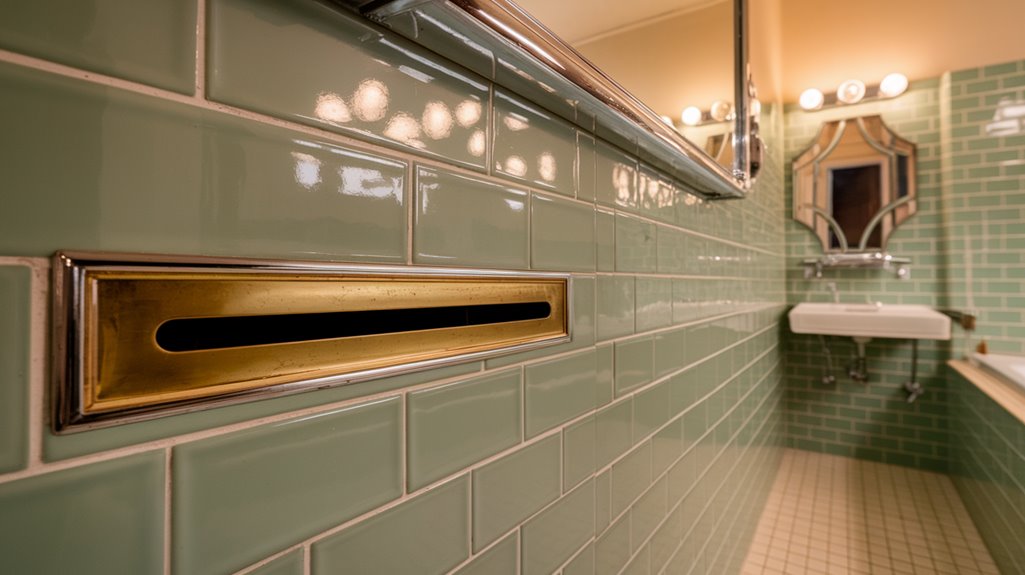
Unlike their predecessors who relied on wall slots, today's safety-conscious shavers have numerous options for responsible blade disposal. You can prioritize blade safety by storing used razors in specialized products like the Martor SAFE BOX or MÜHLE's porcelain blade bank, which offer both style and security. Mixed material razors cannot typically be recycled through standard programs. The program helps create new consumer products from recycled razor materials.
Modern recycling initiatives have transformed how you can dispose of your shaving waste. TerraCycle's program lets you recycle disposable razors and packaging through convenient collection points, often with prepaid shipping labels.
For individual metal blades, you'll find dedicated recycling bins or local metal dealers who accept them. You can also create your own disposal solution by using a sealable container or converting a tin can into a blade bank, ensuring both safety and environmental responsibility.

